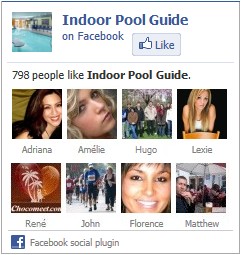
Introduction
There are three types of chlorine test readings: free, combined, and total. Free chlorine plus combined chlorine equals total chlorine. Only the free chlorine is effective in killing bacteria or algae. The combined chlorine is bound with other elements (contaminants) and needs further chlorine additions to release it. The total chlorine, as measured by the OTO test (below) is the sum of the free and combined chlorine.
DPD Testing
Simplified water testing for the pool operator is now possible with new and better testing equipment. The quality and type of test kits vary. The MDEQ only approves results obtained by using the DPD (Diethyl-p- Phenylenediamine) type of test kits. DPD testing kits are manufactured with either liquid or tablet reagents. DPD tablets or liquid is used to test for free available chlorine (F.A.C.), combined available chlorine (C.A.C.) commonly called chloramines, and total available chlorine (T.A.C.). Both tablet and liquid forms give the user the same necessary information when directions are closely followed. (F.A.C.) (C.A.C.) = T.A.C.
Orthotolidine testing (OTO)
Orthotolidine testing (OTO) reveals only the amount of total chlorine found in the pool water and does not distinguish between free available and combined chlorine levels. Therefore, it is not recognized by Health professionals as an adequate pool water testing procedure.
Typical Chlorine Testing Procedures
Before initiating any water tests, read the specific kit directions and be familiar with procedures. Before and after each test, the cells of the test kit (viewing tubes) must be cleaned to insure exact test results. The pool operator should rinse the vial with pool water and:
a. Take the sample from the pool 12 inches below the water’s surface away from water inlets.
b. Add reagent #1 tablet, or liquid reagent #1 and #2 to the proper viewing tube containing the pool water to measure free available chlorine residual.
Recommendations
c. Add reagent #3 tablet if testing for combined or total chlorine in same tube, or add liquid #3 to #1 and #2.
d. Combined chlorine, or chloramines, is determined by subtracting the FAC reading from the TAC.
When conducting the pool water test, remember:
– Follow the kit directions for each test to be performed.
– Never place the thumb or finger over the cell (tube) opening, use the caps provided to prevent contamination.
– Briefly shake or gently stir the sample to dissolve the reagent.
– Read the colored viewing tube under natural or incandescent lighting (not fluorescent).
– Rinse the viewing tubes with pool water or tap water when the test is completed.
Liquid reagents have a one-year shelf life. Tablets have a two-year life under normal, dry storage conditions. Placing or storing either the liquid or tablet reagents in a hot, moist environment, leaving them in the sun, or allowing the liquid to freeze, shortens the life span. The accuracy of the test is likely to decrease if reagents are stored inaccurately or for long periods of time.
If the tablets are off-colored (brown instead of white), crushed, or appear to have been contaminated, discard them. Do not touch the dispensing tops of liquid reagents because body oils on the hands can contaminate the reagent.
Other reagent tablets besides #1 and #3 are available. Number two (#2) is used to test for monochloramines, and number four (#4) measures total chlorine only.
If you conduct a DPD test for chlorine levels and no color shows after adding the reagent, or the color remains only for a short period then disappears (becomes clear), this may indicate that there is too much chlorine in the pool. The loss of color from the reagent indicates “bleaching out” of the test water sample. To double-check your results, discard the sample and take another. Before adding the reagent, dilute this sample with a known amount of tap or distilled water. Multiply the result by the appropriate factor: for a 1:1 dilution multiply the result by two; for a 1:3 dilution multiply by 4, etc.
If the DPD test indicates no difference between free and total available chlorine, but swimmers complain of red, irritated eyes and strong odors, the water could have a chloramine (combined chlorine) problem. If testing fails to find a problem, there could be a residual of #3 reagent left in the viewing tube that is causing the false reading. Rinse, clean the tube, and repeat the test.


